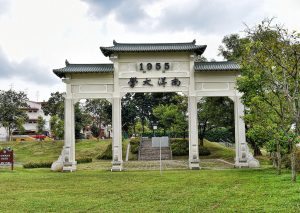Last Convocation of Nanyang University 16 August 1980
August 30, 2022

The National University of Singapore (NUS) that we are familiar with today is the product of a merger between two predecessor tertiary education institutions. Nanyang University, which was Singapore’s only private university that employed Chinese as a medium of instruction, was first set up with the purpose of providing tertiary education to Chinese-educated students in Singapore. In the 1970s, the university experienced falling student enrolment as more parents decided to send their children to English-language schools. Nanyang University, affectionately known as Nantah, would eventually merge with the University of Singapore to form NUS. Nanyang University’s last convocation was held on 16 August 1980.
The history of Nantah is inextricably linked to Singapore’s history of postcolonial nation building. Students from Nantah who were deemed to be in support of communist causes and posed a threat to public order were once arrested in a series of raids on 27 June 1964. Although a large part of the history of Nantah has been forgotten in our collective memory, some debate and speculation still surrounds the intent of the merger between the two predecessor universities. In ‘A Window into Nanyang University: Controversy over the 1965 Wang Gungwu Report’, a chapter in A General History of the Chinese in Singapore) (2019), Associate Professor Huang Jianli (NUS History) examines the controversy that was stirred after Professor Wang Gungwu (NUS History) submitted the 1965 University Curriculum Review Committee Report.
The Wang Gungwu Curriculum Review Committee was tasked with conducting Nanyang University’s third external review. Its recommendations included enhancing bilingualism, a revamped degree structure, and a new Malay Studies Department for the university. All these recommendations sought to re-orientate the university towards the whole of society. The report stirred much controversy. Students organized themselves to stage physical demonstrations, resisting the recommendations of the report and arguing that it assaulted and damaged the essential character of Nantah.
A/P Huang situates the recommendations of the controversial report in its historical context and delineates the key motivations behind these recommendations. For example, the proposal to institute a Malay Studies Department and to enhance bilingualism were critical to moving away from Sino-centricity and towards motivating students to identify themselves with the broader region and as graduates of a Malayan university. The author elucidates the historical contexts in which these recommendations were made and provides a glimpse into the history of Nanyang University, the struggles of its students, and a new way to perceive Singapore’s history of postcolonial nation-building.
Read the chapter here: https://doi.org/10.1142/9789813277649_0021
